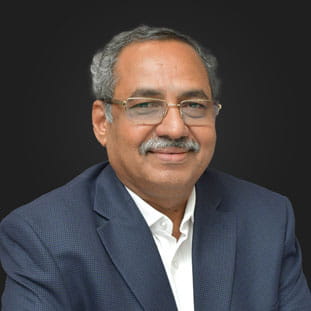-
Our Products
Our FundsFocus Funds
-
Self Care
Self-ServiceFind InformationWays To TransactPartner Solutions
-
Downloads
- Learnings
- About Us
-
More
-
Shareholders
-
Shareholders
-
Updates
-
-
SIP Calculators
- Back
-
Shareholders
Investors should avoid duration risk
Aug 27, 2021
3 min
5 Rating
 A Balasubramanian
A Balasubramanian
By A. Balasubramanian MD & CEO, Aditya Birla Sun Life AMC Limited
The RBI Monetary Policy Committee (MPC) along expected lines, kept policy rates unchanged for the seventh straight time, with Repo at 4% and Reverse Repo at 3.35%. It also reiterated its accommodative stance for as long as necessary to enable economic revival on a durable basis.
While the Governor emphasised on the central bank’s commitment in doing whatever it takes till economic recovery and growth pans out in a sustainable manner, it has tried to strike a balance between being a growth enabler as well as keeping an eye on inflationary pressures and ensuring that inflation remains within the target going forward. There are two key announcements to reflect on here, one the revised inflation forecast to 5.7% while maintaining FY22 growth projection at 9.5%, and the signal towards liquidity normalisation process in a calibrated manner with steps such as increasing the quantum of variable reverse repo rate (VRRR) to Rs. 4 trillion from the current Rs. 2 trillion.
Reading the fineprint
The RBI has taken a pragmatic approach. It recognises that the ‘nascent and hesitant recovery in the economy needs to be nurtured through fiscal, monetary and sectoral policy levers’. It is a tightrope walk for RBI between supporting growth and government borrowing, in an environment of liquidity surplus while inflation forecast inches close to comfort band. The abundant liquidity can’t remain in the system for too long. If it remains for too long, it can unnecessarily create unexpected inflation subsequently. The state and central governments are running high fiscal deficits and therefore, they will be in the market for borrowing continuously. To an extent their borrowing will be met with the high liquidity. In the absence of big expansion by bigger corporates, there is no incremental need for large ticket borrowing. The incremental credit demand is coming from small and medium enterprises and retail, for which there is enough liquidity for banks to fund. So, the gradual unwinding process has to start. With VRRR I would say it is the beginning of the unwinding process, which will happen gradually. MPC will stay neutral with economic growth not coming back in a hurry. At least, in the current calendar year, it doesn’t look like there will be a rate hike. Till December, we should see a status quo and then take a call as we come closer to that. One can expect incremental liquidity management measures to follow before reverse repo rate hike earliest by December. Overall, we continue to believe that normalisation is likely to be very gradual and RBI will continue to support growth unless inflation outlook deteriorate significantly such as rising crude and commodity prices, or we see faster withdrawal of ultra-easy monetary policy in advanced economies.
Key takeaways from the monetary policy
First and foremost it is important to take note that the statement from the central bank seemed optimistic of growth revival and it will continue to be supportive of economic growth with an accommodative policy. So that’s good news. Hence, interest rates are not likely to head north in the near term. Although the inflation forecast is below the RBI’s upper band of inflation target of 6%, input prices are rising across manufacturing and services sectors and weak demand and efforts towards cost cutting are tempering the pass-through to output prices and core inflation. Inflation may remain close to the upper tolerance band but these pressures are deemed ‘transitory’ and may subside gradually on account of kharif harvest and other supply side measures starting to show their effect.
Economic activity picked up in last couple of months as some states eased pandemic related restrictions. Buoyant exports, the expected pick-up in government expenditure, including capital expenditure, and the recent economic package announced by the Government will provide further impetus to aggregate demand. Although investment demand is still anaemic, but improving capacity utilisation and benign monetary and fiscal condition should aid recovery. The impact of productivity gains as a result of pandemic driven innovation and operating models will continue even after Covid recedes. This should lead to a virtuous cycle of investment and employment generation.
In line with our view that rates have bottomed, and yield curve has become steep, one needs to choose appropriate points depending upon their investment horizon. While duration gains are behind us but higher carry (steepness) will continue to provide both insurance and compensation for higher volatility compared to operative rates. It appears that operative rates are likely to stay at 3.35% for next 4 months. Investors with 1-3 months investment horizon should look at Ultra Short Term category, 3-6 months at Low Duration funds, 6-9 months at Floater funds. For investors with investment timeframe of more than 12 months can look at Short Term, Corporate Bond and Banking & PSU Debt fund categories. For those with a timeline of more than three years can consider Gilt, Income and Credit Risk fund categories.
To conclude, broadly yields will remain tight for Government bonds given the fiscal needs keep the supply pipeline strong. Hence this segment of the yield curve should be in the range of -10 bps to +25 bps. Duration risk should be avoided for the time being, however five year FMP with dedicated investment in State Government bonds should be fine. In the absence of credit growth, credit spreads would remain low. However with the improvement in the overall credit behaviour there will be a possibility of below AA credits to see some renewed interest.
Mutual Fund investments are subject to market risks, read all scheme related documents carefully. This article was first published in The Hindu Business Line on August 15, 2021Fixed Income categories to consider





 1800-270-7000
1800-270-7000



